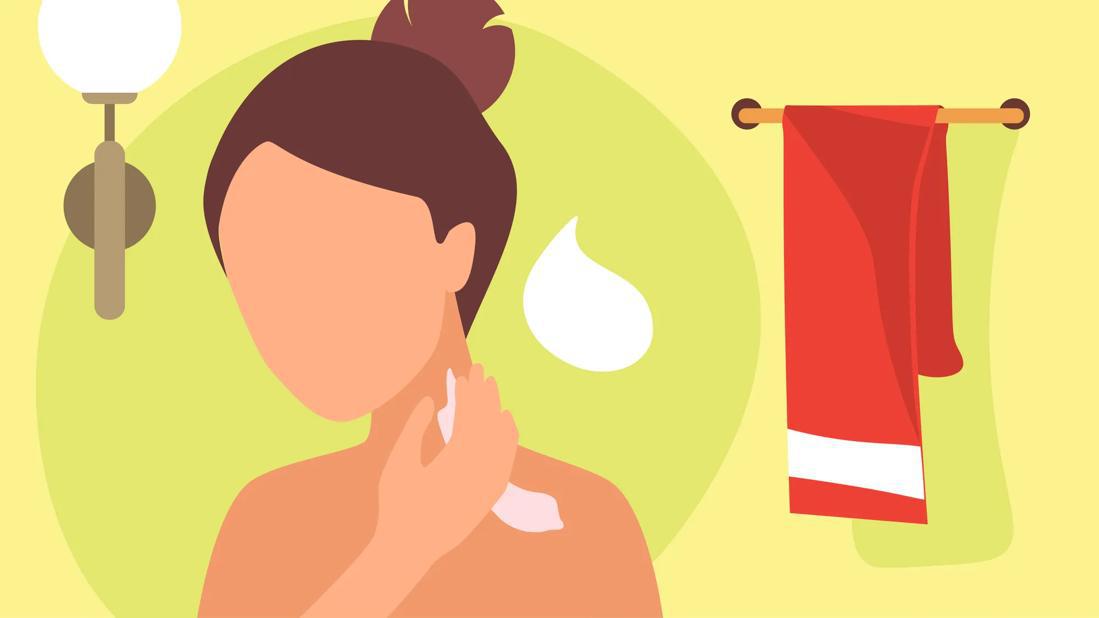Colloidal Oatmeal: What Is It and What Are Its Benefits?
These oats can help soothe dry skin and mild rashes and may help improve your skin’s microbiome

Oatmeal is good for your insides. But did you know that it’s also excellent for your skin?
“Aside from being nutritious in the morning, oatmeal actually has been used for a really long time — even in the ancient Egyptian times for skin care,” shares dermatologist Gowri Kabbur, MD.
“Colloidal” means tiny particles suspended in liquid. And oatmeal in colloidal form is a popular ingredient in skin care products.
What’s it good for? Let’s discuss.
What is colloidal oatmeal?
“Colloidal oats are oats that have been finely ground and then boiled,” Dr. Kabbur explains. “Boiling the oats extracts the colloidal material, which contains starches and other beneficial molecules.”
Colloidal oatmeal is regulated by the U.S. Food and Drug Administration (FDA), which means that research has demonstrated its safety and effectiveness.
If you browse the skin care aisle, you’ll find colloidal oatmeal products like:
- Bath powders
- Creams and moisturizers
- Rash remedies
- Shampoos
- Shaving creams
What are colloidal oatmeal benefits?
But wait … what’s the big deal about colloidal oatmeal, anyway? Let us count the ways.
“It’s an excellent skin protectant,” Dr. Kabbur says. “It can moisturize inflamed or irritated skin very well.”
She explains more about the main benefits of colloidal oatmeal for your skin:
- Anti-inflammatory. Colloidal oatmeal is a soothing skin care ingredient because it has components that help reduce inflammation. It does this by calming cytokines, which are inflammatory proteins in your body that cause skin itchiness and redness.
- Antioxidant properties. Colloidal oatmeal contains vitamin E, an antioxidant that can help prevent harmful cell damage (and thus, reduce signs of aging in your skin).
- Moisturizes.The starches and beta-glucans (a natural complex sugar) in colloidal oatmeal help your skin retain moisture. “For many dry skin conditions, a moisturizer with colloidal oatmeal may work better than a plain moisturizer alone,” Dr. Kabbur notes.
- Supports a healthy skin barrier. Your skin microbiome consists of microscopic organisms (both bacterial and fungal) that are naturally present. A healthy skin microbiome offers a protective barrier that helps you fend off unhealthy microbes that can irritate your skin and cause inflammation. “Colloidal oatmeal is almost a prebiotic, in a way,” Dr. Kabbur says. “It can provide skin barrier protection.”
- Reduces staph.Research shows that colloidal oatmeal helps manage eczema by reducing the amount of staph growth on eczema-prone skin. Staphylococcus (staph) is a common, potentially harmful bacteria that can contribute to eczema flare-ups.
What skin conditions can colloidal oatmeal soothe?
Colloidal oatmeal can be a helpful, safe and soothing ingredient for chronic conditions that cause the surface of your skin to become irritated, like eczema and psoriasis.
But you don’t have to have a chronic skin condition to benefit from colloidal oatmeal products. “It’s also a very good treatment for mild skin irritation,” Dr. Kabbur states. This includes:
What’s the best way to use colloidal oatmeal on your skin?
“You can use colloidal oatmeal in a topical product that stays on your skin, like a cream or ointment. Rub it into your skin and use it twice a day,” Dr. Kabbur instructs.
You can also use products that contact your skin temporarily, like bath powder. Stay in a colloidal oatmeal bath for about 15 minutes.
How to make colloidal oatmeal at home
To make your own colloidal oatmeal:
- Blend half a cup of uncooked oats in a blender or food processor until it’s a very fine powder.
- Place the oat powder in a small saucepan with one cup of water and bring it to a boil.
- Boil for a few minutes to extract the beneficial starches.
- Cool the boiled oatmeal to room temperature.
- Use one cup of colloidal oatmeal in the bath or apply a bit of it as a paste to your skin.
- Stay in the bath or leave the paste on your skin for 15 to 20 minutes.
Homemade colloidal oatmeal is an inexpensive remedy, but it can be messy if you use it directly on your skin. For an easier (and easier-to-clean-up) experience, you may want to stick with store-bought colloidal oatmeal products.
What are the side effects of colloidal oatmeal?
Avoid colloidal oatmeal if you have an oat allergy. “But in general, colloidal oatmeal is well-tolerated and rarely has side effects,” reassures Dr. Kabbur. “It’s safe for children and adults.”
But if you have very sensitive, allergy-prone skin, she recommends doing a spot test first: Apply a little of the colloidal oatmeal product and wait 24 to 48 hours to see if you get redness or itchiness. If you don’t have a reaction, you should be good to use it all over your body.
Final thoughts on colloidal oatmeal for skin
Colloidal oatmeal is excellent for mild skin conditions, but it may not be enough if you have moderate to severe skin disease or bad flare-ups. If you’ve tried colloidal oatmeal and it isn’t helping, ask your primary care provider or a dermatologist about your options.